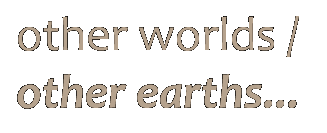Teacher Resources: Supplemental Activities
Introduction: Your Place in the Universe
Determining Prior Knowledge—here are two activities for teachers to use to determine prior knowledge of students as they begin this project.
- What are your ideas about the Universe? Cosmic Survey—Cosmic Questions Educator Guide pages 9-16
- This is an introductory activity that guides students as they begin to think about where we fit in the universe.
- Website: www.cfa.harvard.edu/seuforum/exhibit/resources/resources.htm
- Modeling the Universe—Cosmic Questions Educator Guide pages 17-19
- In this activity, students are challenged to create a model of the universe in a single class period.
- Website: www.cfa.harvard.edu/seuforum/exhibit/resources/resources.htm
Size and Scale of the Universe—as students begin to think about the vastness of our Universe, these activities can be used to reinforce the concept that even the nearest star lies enormously far beyond our own solar system.
- Time Travel to the Edge of the Universe and Back
- Students study the size of the universe, calculate the time to travel to near and distant destinations, and construct a time scale model of the universe by using time travel distances.
- Website: www.pbs.org/deepspace/classroom/activity1.html
- The Scale of the Realms of the Universe —from Modeling the Universe: An Exploration in Space and Time
- In this activity, students gain a sense of relative scales of the various realms (Earth, solar system, Milky Way, local group, local Supercluster of the Universe).
- PDF: cfa-www.harvard.edu/seuforum/mtu/MTUrealms.pdf
- How big is our Universe (an exploration through space and time)
- This website allows students to travel from Earth to distant galaxies and beyond. At each stage in the journey, there are sidebar activities for students to try.
- Website: www.cfa.harvard.edu/seuforum/howfar/howbig.html
- Our place in space (UniverseForum)
- This tour of the Universe allows students to find out what instruments are used to learn about the Universe.
- Website: www.cfa.harvard.edu/seuforum/opis_tour_earth.htm
Part One: Detect an Alien World and Find Out What It's Like
To support Activity 1.2: Detecting an alien planet I: Modeling a Transit
These brief videos can serve as an introduction for students as they begin to think about how they will determine if there is a planet orbiting their star.
- Website: dsc.discovery.com/videos/space-3-questions-exoplanets.html
Intro to transiting planets—Discovery Channel, April 2008 (2min 11 sec) - Website: planetquest.jpl.nasa.gov/gallery/gallery_index.cfm
- PlanetQuest: the Movie
- Four Ways to Find a Planet
To support Activity 1.4: Create a first portrait of your planet (distance from Earth to your planet)
As students begin to calculate the distance of their star from the Earth, these activities can be used to help them comprehend vast distances and in their understand of the inverse square law.
- Demonstrating the Distances of Stars
- In this activity, students use a piece of black paper to create a sample star field. They will transform this two-dimensional star field into a three-dimensional star field by shining light from an overhead projector across the room.
- Website: www.pbs.org/deepspace/classroom/activity3.html
- Inverse square law—A quick and easy activity using a flashlight
- Inverse square law—Two activities for those using light sensors.
Part Two: Looking for a Habitable Planet... and Life
This brief video, featuring Lisa Kaltenegger, can be used to help students transition from collecting evidence to using models.
Website: www.pbs.org/wgbh/nova/sciencenow/0402/01-life-flash.html
To support Activity 2.2: Searching for oceans, ice and land. Decoding the light reflected from a planet
- This hands-on activity introduces the concept of albedo to students.
- This video shows the Moon transiting Earth.
- Exploring the Spectrum—Cosmic Questions Educator Guide pages 22-24
- This activity introduces spectra to students.
- Website: www.cfa.harvard.edu/seuforum/exhibit/resources/resources.htm
To support Activity 2.3: Detecting plant life using infrared light
- This website provides information and activities for grades K-12 on infrared astronomy.
- Website: coolcosmos.ipac.caltech.edu/



